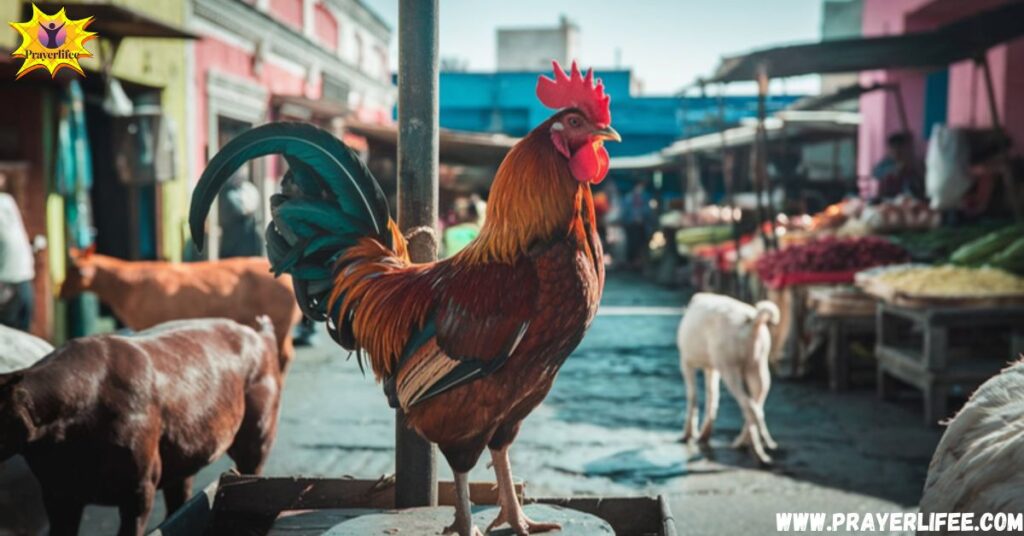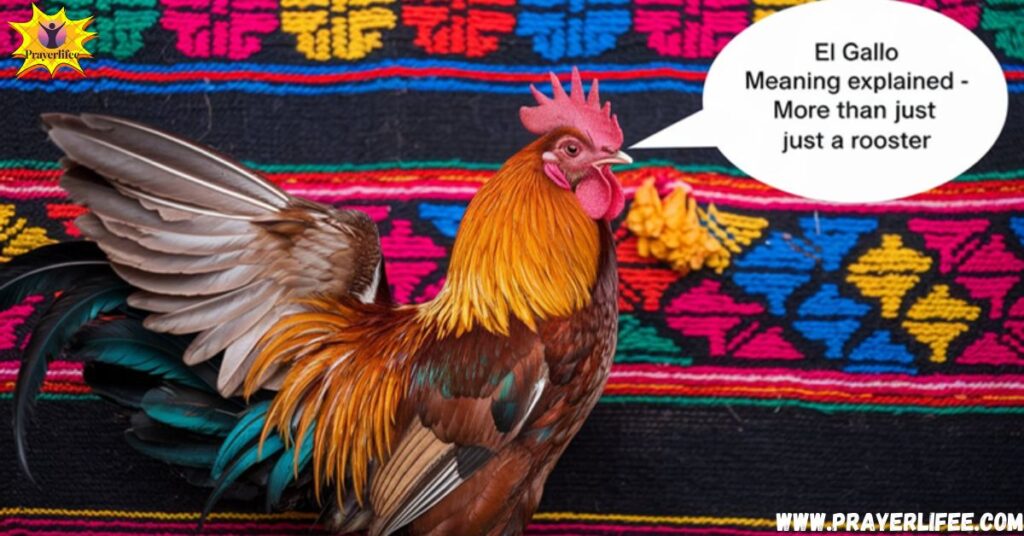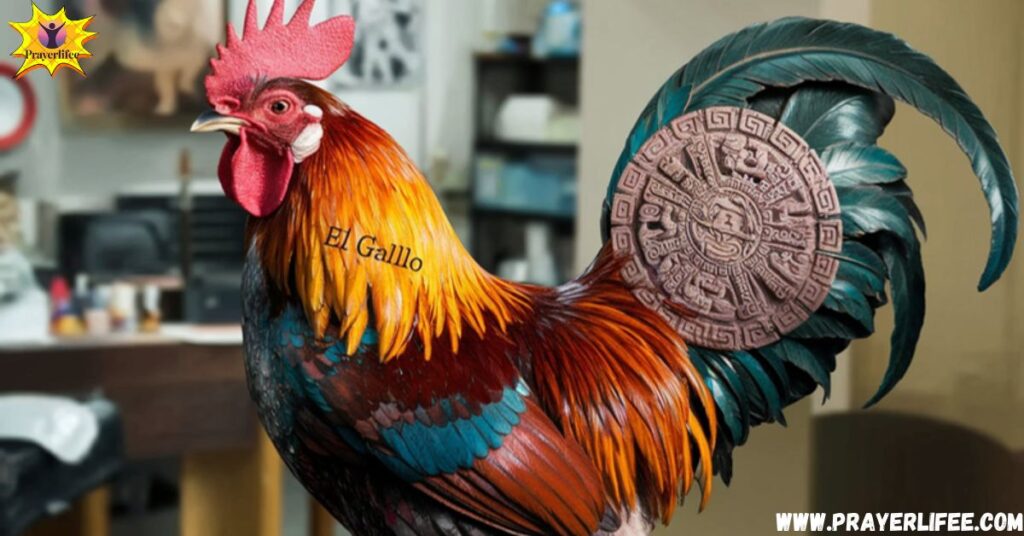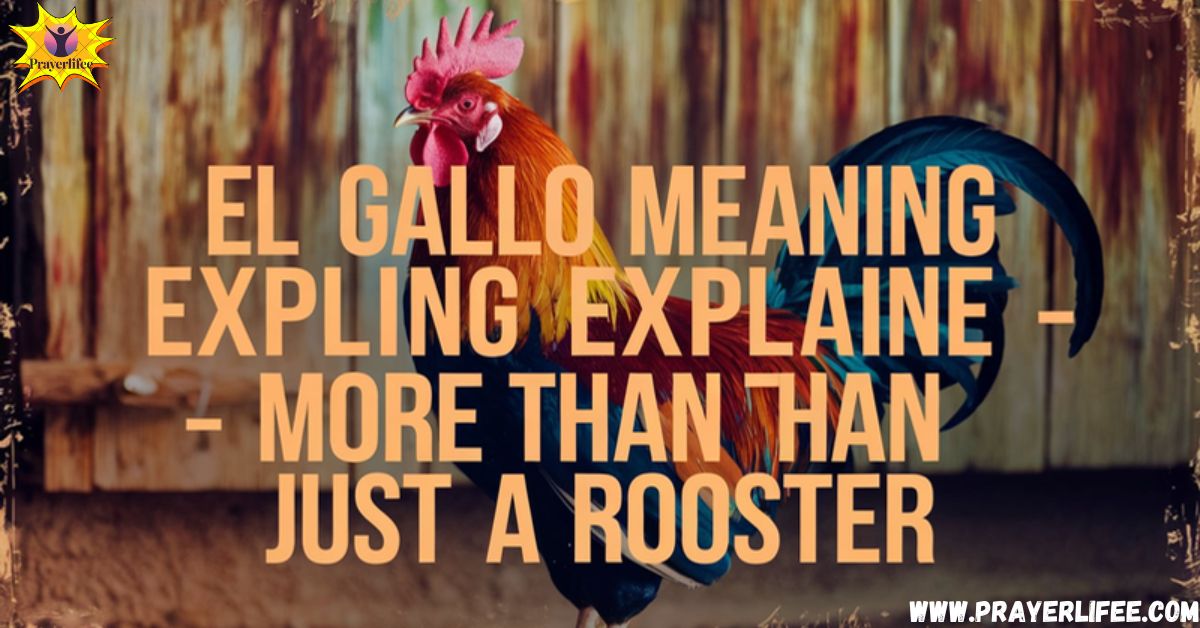If you’ve ever heard the term “El Gallo,” you might initially think it refers to a rooster, but there’s much more to this term than meets the eye. In Spanish, “El Gallo” directly translates to “the rooster,” but its cultural and symbolic meanings extend far beyond just being an animal. Over the years, El Gallo has become a symbol of strength, courage, and renewal across various cultures, particularly in Mexican traditions.
From rooster symbolism in folklore to its role in ranchera music and even Lucha Libre, the significance of El Gallo is deeply embedded in Spanish culture and Latin America. In this article, we will dive deep into the meanings and interpretations of El Gallo, from its historical roots to its modern-day cultural impact.
Literal Meaning of “El Gallo”
At its most basic, El Gallo simply means “the rooster” in Spanish. In rural life, roosters have been part of daily life for centuries, often used to mark time with their crowing at dawn. In Spanish-speaking countries, El Gallo refers to a male chicken, but it has also evolved into a much richer symbol.
In many rural parts of Mexico and other parts of Latin America, the rooster’s crow signifies the beginning of a new day. It’s associated with early mornings, discipline, and vigilance, making it a vital part of rural life and Mexican culture.
What Does “El Gallo” Mean?
While “El Gallo” directly translates to “the rooster,” its meaning goes far deeper than that. In Spanish folklore, the rooster is a symbol of masculinity, courage, and strength. The rooster’s crow at dawn signifies more than just the start of the day; it represents a call to action, a moment of awakening, and a declaration of readiness to face challenges.
In Mexican traditions, roosters are seen as brave animals, unafraid of defending their territory and facing whatever comes their way. This symbolism of bravery and resilience is central to the concept of El Gallo in many cultural contexts.
Phonetic Breakdown
In Spanish, El Gallo is pronounced as [el gah-yo]. The phonetic structure of the term is easy to pronounce, and the slight variation in pronunciation may occur depending on the speaker’s accent. Whether you’re in Spain, Mexico, or other parts of the Spanish-speaking world, you will encounter El Gallo in various cultural expressions, and the pronunciation remains generally consistent.
Symbolism and Cultural Significance of El Gallo

The rooster has been a symbol of power and strength for centuries, particularly in Latin American and Spanish culture. It represents not just an animal, but a larger symbolic meaning tied to bravery, masculinity, and leadership. In Mexican culture, El Gallo symbolizes resilience, the courage to face adversity, and the strength to stand firm against challenges.
El Gallo is central to many Spanish proverbs and Mexican folklore. For example, the saying “Cuando el gallo canta, la hora está marcada” (When the rooster crows, the hour is marked) is a reminder that time is precise, and the rooster’s crow is a reliable signal to start something new. The rooster is seen as a vigilant guardian, embodying the idea of being alert and prepared for whatever comes next.
The Rooster as a Symbol of Strength and Courage
In Mexican traditions, the rooster is often seen as a symbol of masculinity and pride. It represents strength, courage, and the ability to overcome obstacles. The rooster’s crowing at dawn is symbolic of a new beginning, a fresh start after a long night, and a moment to seize opportunities.
The rooster’s defiant nature and willingness to fight make it a powerful symbol in Mexican folklore. In Lucha Libre, the rooster is often used as a symbol of the wrestler’s fighting spirit, courage, and readiness to face any challenge. Just like a rooster standing tall, a wrestler who embodies the gallo is fearless and determined.
Read More: Best Safety Pin Necklace Meaning in 2025
“El Gallo” in Folklore and Proverbs
The rooster’s presence in folklore is widespread throughout Latin American culture. In Mexican folklore, the rooster is more than just a barnyard animal; it’s a figure of wisdom, pride, and protection. Many Spanish proverbs about roosters use the bird as a symbol of lessons related to self-discipline and humility.
The saying “El gallo que canta no pelea” suggests that someone who brags or boasts is often less capable of actual achievement. This reflects how El Gallo serves as a metaphor for action over words.
The Awakening of New Beginnings
The rooster’s crow at dawn marks the arrival of a new day, symbolizing renewal and hope. In Mexican culture, the rooster represents a new opportunity, a fresh chance to start over despite the struggles of the past. This symbolism is closely linked to the rooster’s role in folklore as a harbinger of new beginnings.
In rural life, roosters signal the start of the workday, calling people to rise and begin their tasks. The crowing of the rooster is seen as an invitation to take action and embrace what the day has to offer. It serves as a reminder that no matter how difficult yesterday was, today brings fresh possibilities.
El Gallo in Popular Culture
El Gallo is not just a symbol in rural life; it has also found its way into popular culture, particularly in Mexican music and cinema. In Latin music, the rooster plays a central role, often symbolizing the bravery and pride of the people who sing about it. One of the most famous songs is “El Gallo de Oro” by Vicente Fernández, where the rooster represents a brave and unyielding individual.
In Lucha Libre, the gallo has become synonymous with wrestling personas. Wrestlers adopt rooster-themed names and masks, symbolizing their fierce and determined nature. These wrestlers, like El Gallo Negro, portray themselves as strong, fearless fighters, much like the bird they are named after.
Music and Songs: The Rooster in Latin Music

El Gallo de Oro, or “The Golden Rooster,” is an iconic song by Vicente Fernández, a legendary figure in ranchera music. The song describes a character who is as fearless and determined as the rooster itself. The lyrics, “Yo soy el gallo de oro, el que no le teme a nadie,” (I am the golden rooster, the one who fears no one) express the pride and bravery that El Gallo symbolizes.
In ranchera music, the rooster is a metaphor for someone who faces life’s challenges head-on, proud and unyielding. These songs reflect the cultural significance of the rooster as a symbol of masculinity and strength in Mexican folklore.
Famous Lyrics from “El Gallo de Oro”
The famous line from “El Gallo de Oro”, “Yo soy el gallo de oro,” has become a symbol of confidence and resilience in Latin American culture. These lyrics represent the golden rooster as a figure of pride, strength, and the will to overcome any obstacle. The song has been embraced by fans across Mexico and beyond, solidifying El Gallo as a lasting cultural icon.
“El Gallo” in Literature and Cinema
The rooster has also made its mark in Mexican literature and cinema. In Mexican films, El Gallo often represents a figure of heroism and resilience. For instance, in many Lucha Libre films, the rooster is used as a metaphor for the fighters’ unyielding will and courage. In Mexican literature, the rooster is depicted as a symbol of survival and community, reflecting the resilience of the people.
“El Gallo” in Mexican Cuisine
In Mexican cuisine, El Gallo is not only a symbolic figure but also a delicious part of the culinary landscape. One of the most famous dishes featuring rooster is Gallo en Mole, a hearty and flavorful dish made with rooster meat simmered in a rich mole sauce. This dish is often prepared during festivals and family gatherings, highlighting the rooster’s importance in Mexican culture.
Rooster Dishes in Mexico
Gallo en Mole is one of the most iconic dishes in Mexican cuisine, and it exemplifies the cultural role of the rooster in food. The dish is rich, flavorful, and often served during major celebrations, reflecting the significance of El Gallo as a symbol of abundance and tradition.
Gallo en Mole Recipe (Simplified)
To prepare Gallo en Mole, you’ll need the following ingredients:
- 1 whole rooster (or chicken)
- 2 tablespoons of mole paste
- 1 cup of chicken broth
- 2 cloves of garlic
- 1 onion, chopped
- 1 tablespoon of vegetable oil
- Salt to taste
- Brown the rooster pieces in hot oil, then set aside.
- In the same pan, sauté garlic and onions until soft.
- Add the mole paste and chicken broth, stirring until smooth.
- Return the rooster to the pan, cover, and simmer for about 2 hours until tender.
- Serve with rice and enjoy!
Festivals and Rooster Feasts
In Mexico, festivals celebrating El Gallo are an important part of cultural life. Festivals honoring the rooster include parades, music, and traditional dishes like Gallo en Mole. These festivals celebrate the resilience and courage represented by El Gallo in Mexican folklore.
El Gallo in Mexican Wrestling (Lucha Libre)
In Lucha Libre, El Gallo represents strength and determination. Wrestlers often take on the persona of El Gallo, wearing masks and costumes that highlight their fierce nature. These wrestlers, like El Gallo Negro, portray themselves as unyielding fighters, embodying the rooster’s symbolism of bravery and resilience.
Iconography in Lucha Libre
The iconography of El Gallo in Lucha Libre wrestling is deeply tied to the concept of a fighter’s spirit. Wrestlers who take on rooster personas are often seen as symbols of fearless competitors who are ready to face any challenge in the ring.
El Gallo in Mexican Wrestling (Lucha Libre)

Lucha Libre, or Mexican wrestling, is an iconic part of Mexican culture where larger-than-life characters, often donning elaborate masks and costumes, battle in the ring. Among the many colorful personas in Lucha Libre, El Gallo holds a prominent place. Here, the rooster is not just an animal; it becomes a metaphor for strength, power, and the fighting spirit of the wrestlers.
The rooster as a mascot and symbol of fighters in Lucha Libre is not just about physical strength. It’s also about mental resilience and the determination to fight against all odds. Just as a rooster stands tall and faces challenges fearlessly, the Lucha Libre wrestler who takes on the El Gallo persona is often portrayed as a hero who stands his ground and refuses to be defeated.
Mascot and Symbol of Fighters
The concept of El Gallo as a mascot in Lucha Libre extends beyond just the wrestler’s persona—it embodies the spirit of fighting against adversity. The rooster’s bravery and courage are not only symbolic of a fighter’s physical prowess but also their mental fortitude. As a symbol of masculinity and fighting spirit, El Gallo represents the resilience required to endure both in the ring and in life.
El Gallo as a Metaphor
Beyond the wrestling ring and festivals, El Gallo also serves as a powerful metaphor in various aspects of life. In Mexican culture, the rooster is often used to represent qualities like leadership, bravery, and the ability to face adversity with courage. The image of El Gallo is frequently employed to describe individuals who show strength of character in difficult situations.
For example, the phrase “El gallo que canta no pelea” (The rooster that sings does not fight) can be interpreted as a metaphor for those who boast about their abilities but lack the true courage to act. The rooster’s crowing symbolizes the moment of action, and El Gallo as a metaphor encourages people to take responsibility for their actions rather than just talk about them.
Conclusion
El Gallo is much more than just a rooster in Mexican culture and Spanish folklore. It’s a powerful symbol of strength, courage, and resilience. Whether in music, literature, folklore, or religious symbolism, the rooster holds a significant place in Mexican traditions and Latin American culture. El Gallo teaches us the importance of facing challenges with pride, standing strong in the face of adversity, and celebrating new beginnings with every crowing of the rooster at dawn.

